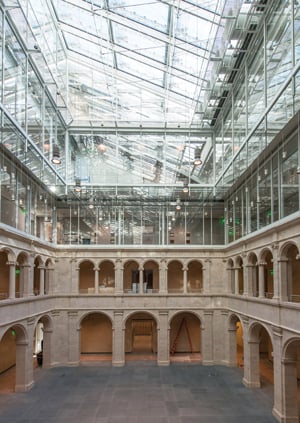Art World
Critics Trash Renzo Piano’s Harvard Museums Expansion


Sarah Cascone

As Harvard University prepares to unveil its newly expanded Fogg Art Museum next month, the Renzo Piano-designed building is meeting with mixed reviews, according to ARTnews, which has the story. Detractors are unhappy with how the new construction affects the school’s existing architecture, in particular the nearby Carpenter Center for the Visual Arts designed by Le Corbusier.
The storied architect’s last major building, and the only one of his designs to have been erected in the US, the Modernist gray Carpenter Center is commonly thought to resemble a pair of mating elephants and wasn’t well received when it opened in 1963. But it has since become an important part of the architect’s legacy. As part of the expansion, Piano has physically linked the Carpenter Center to the museum complex, controversially extending a curved concrete Le Corbusier ramp with a granite-encased section that connects the buildings. And critics aren’t thrilled.
Princeton University architectural historian Beatriz Colomina called the treatment of Le Corbusier’s structure “a crime against humanity,” while Hayden Salter, an associate at Rafael Moneo’s Madrid office said, “This is a case study for a poorly handled interaction between new and not-so-old architecture. It’s shocking and seems so unnecessary.”
The new construction brings the art collections of the Fogg, the Busch-Reisinger, and Arthur M. Sackler museums under one roof for the first time, allowing students and visitors to seamlessly transition from American art to European paintings to antiquities and Asian art.
The Harvard Art Museums open November 16. The inaugural exhibits will include “Mark Rothko’s Harvard Murals,” the digital conservation of a series of five 1962 paintings created by the artist for a university dining room (see “Harvard to Unveil Forgotten Mark Rothko Murals“).